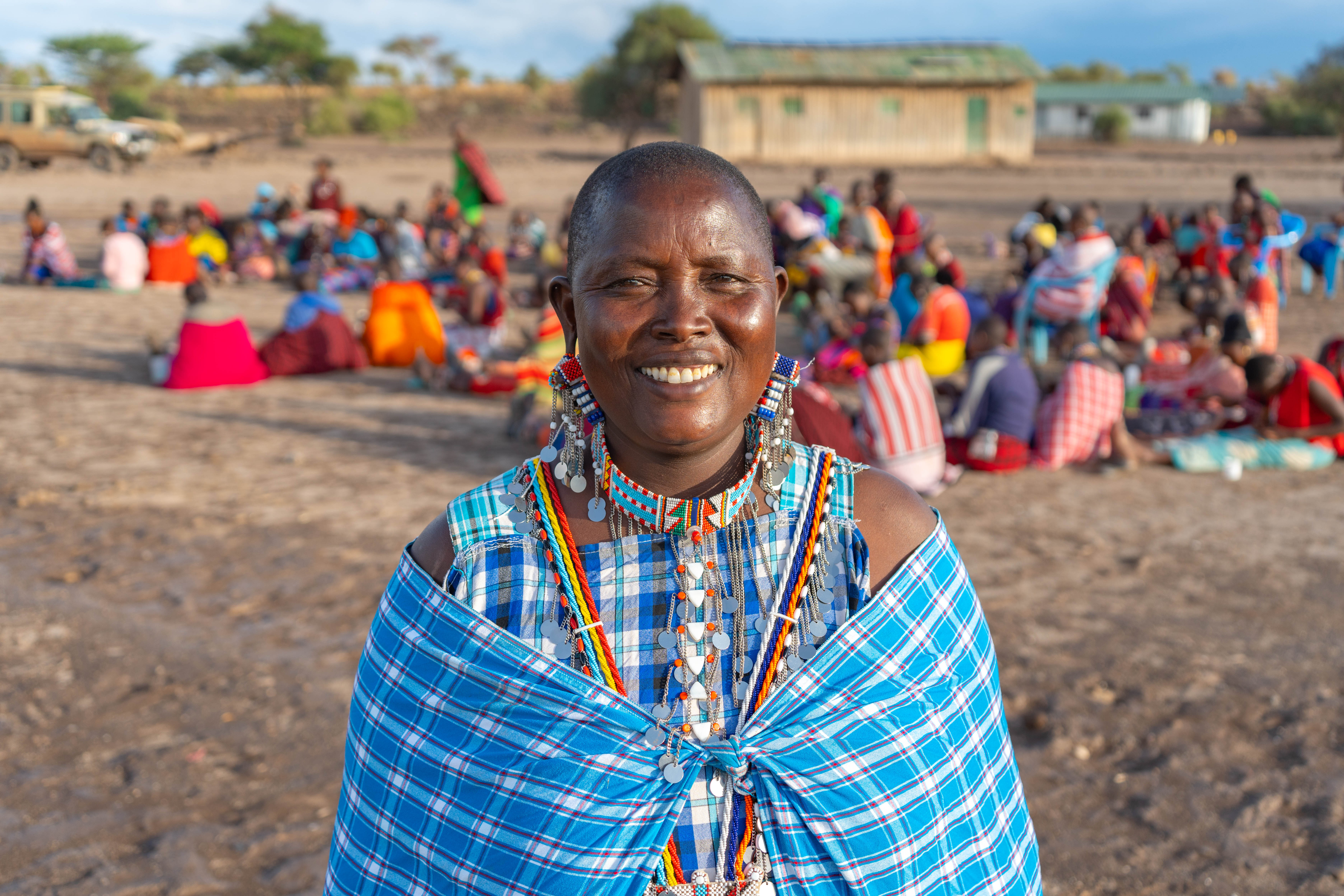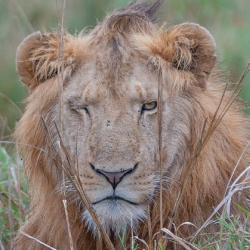Maasai women bead to preserve their cultural identity and save wildlife
As dusk falls in Esiteti village in Kitirua Conservancy, 179 Maasai women and youth sit in the shade of an acacia tree. In the background is the magnificent backdrop of Africa’s tallest mountain, Mt Kilimanjaro. Deeply engrossed in her handiwork, Margaret Ringoine intricately turns beads into stunning eye-catching pieces. As the chair of Osotua Esiteti Women Group, Margaret provides the artisans with technical direction and quality control guidelines on the art of beadmaking, ensuring a refined and crisp outcome for each bracelet, neck piece or beadwork. Attention to the finer details makes all the difference in this craft. The colorfully dressed ladies have an incredible connection with beads and string, and it’s refreshing watching them transform simple beads into remarkable masterpieces. This is something they’ve practiced for generations. Today is a busy day in the office — they’re handmaking 10,000 beaded bracelets for US and Europe-based markets, thanks to a partnership with the International Fund for Animal Welfare.

To visitors and tourists from urban metropolises globally, necklaces, earrings and anklets are everyday adornments worn as a fashion statement. Contemporary societies often wear ornaments as a form of art for self and creative expression. However, amongst the Maasai community of Southern Kenya, beaded jewellery, predominantly made by women, means a lot more than what meets the eye. Beadwork is an iconic symbol of Maasai identity representing tradition, beauty, strength, pride, wealth, and even social status. There are different types of beaded ornaments that are only worn on special occasions, pieces designated for men, and those for women. Each color of the bead and pattern represents symbolism deeply rooted in their culture. The red ones represent courage, bravery, and the blood of the cattle slaughtered for celebratory rituals. Green stands for the healthy habitats that produce grass for their cattle without which the Maasai cannot sustain their pastoralist lifestyle. The orange denotes the warmth, and hospitality of the Maasai people.
Beadwork also harbors significant historical and cultural meanings that articulate the status of people in society. Amongst the Maasai, the ornaments on a lady can tell you her marital status! In this vibrant tapestry of tribal culture, identity and tradition, each hue stands for something: A unique facet of Maasai culture where every tone tells distinct individual stories, and every shade reminiscent of past historical events.
In this remote village, beadwork has not only empowered Maasai women to preserve their culture and earn a sustainable livelihood but more importantly, save wildlife species such as elephants by allowing them to roam in the same landscape that sustains their nomadic lifestyle. Esiteti village is part of Kitirua Conservancy where the Maasai community live in harmony with wildlife species. This important sliver of land connects the Amboseli National Park to the greater Kilimanjaro and Enduimet Wildlife Management area, allowing wild animals such as elephants and giraffes to freely move vast distances in search of food, water and breeding grounds. Kitirua Conservancy has been central to the success of IFAW’s Room to Roam initiative in this transboundary conservation area. Thanks to the vibrant tourism in the area, women have been able to earn an income, which has in turn enabled them to educate their children and launch micro-enterprises to supply food rations to rangers in the area.

“Half of the income we receive from selling beadwork helps us to support our children to access an education. If we fail to protect our wildlife, the number of tourists visiting Amboseli will drop, meaning we will not have visitors to sell our beads to. Beading has given women an opportunity to gain meaningful employment and preserve our culture and wildlife for future generations,” says a delighted Margaret.
According to the UN World Cities Report 2022, the African continent is witnessing rapid urbanization, with urban population numbers growing at an annual rate of 3.44%. Due to this trend, we’re also witnessing the erosion of cultural aspects of tribal cultures such as beading which may be lost in future. Esiteti Women Group therefore stands out as a beacon of hope that this age-old practice will stand the test of time to preserve the cultural identity and heritage of one of East Africa’s iconic tribes.









